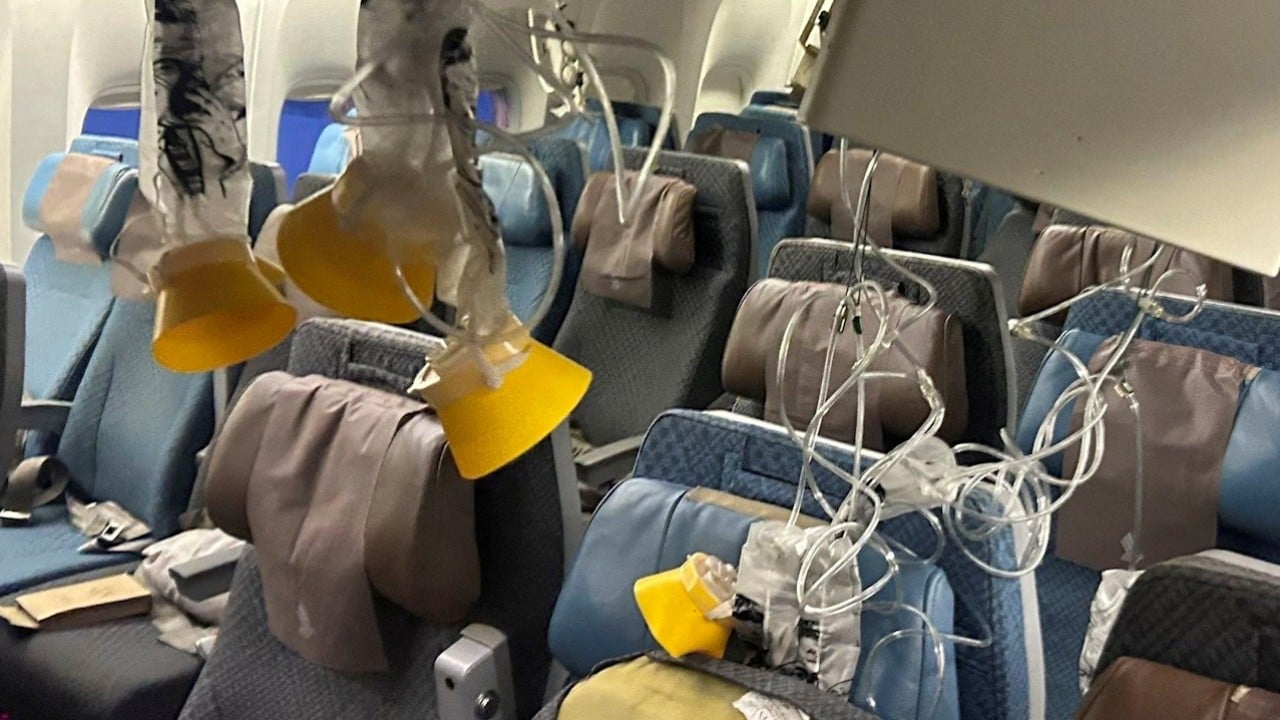Singapore Airlines has sent out offers of compensation to passengers of turbulence-hit flight SQ321, with those who suffered minor injuries able to claim at least US$10,000 from the carrier.
An aviation law expert who spoke to This Week in Asia said that while it was standard practice for airlines to offer compensation after such incidents, the payout for light injuries in this case was more generous, given the serious turbulence and massive publicity it attracted.
In a social media update on Tuesday, the airline apologised to passengers for the “traumatic experience on board flight SQ321” and said it was “committed to providing our full support and assistance during this time”.
Those who had suffered minor injuries were offered US$10,000 in compensation while those who sustained more serious injuries were offered an advance payment of US$25,000 to address their immediate needs, and are invited to discuss a compensation offer that can meet their specific circumstances, the airline said.
“SIA will provide a full refund of the air fare to all passengers travelling on SQ321 … including those who did not suffer any injuries,” it stated, adding that all passengers had received S$1,000 each for expenses upon their departure from Bangkok.
Last month, the London-Singapore flight with 211 passengers and 18 crew on board encountered severe turbulence, leading to the death of a 73-year-old British man and injuring dozens of others. The plane made an emergency landing in Bangkok.
Preliminary findings indicated that the aircraft dropped 178 feet over 4.6 seconds after an “uncommanded increase in aircraft altitude and airspeed” due to rapid gravitational force changes.
Alan Tan, a law professor at National University of Singapore who specialises in aviation, noted that the US$10,000 offered to those with minor injuries was “generous”.
“This is likely a special situation where Singapore Airlines is being generous, given the serious turbulence and the massive publicity the incident attracted,” Tan said.
Singapore Airlines is being generous, given the serious turbulence and the massive publicity the incident attracted
Airlines typically offer compensation, but passengers can choose to accept or reject the amount if they believe their claims merit higher payouts, he said.
“The more relevant issue is for those with serious injuries, who are likely to need time to assess their injuries and take legal advice,” said Tan, noting the airline would have assessed passengers as having serious, minor or no injuries, based on evaluations by Thai doctors on the ground.
He said mental trauma is not covered under the Montreal Convention, which governs airline liability for passenger injury or death. The term “bodily injury”, as used by the convention, has been interpreted by courts to mean physical harm only, he said.
In 2000, SIA offered US$400,000 each in compensation to the families of the 83 passengers and crew who died when a plane crashed on a closed runway during take-off at Taoyuan International Airport in Taiwan.
Singapore Airlines has had seven accidents in its history, according to the Aviation Safety Network, a database that provides information on airline safety issues and accidents.


